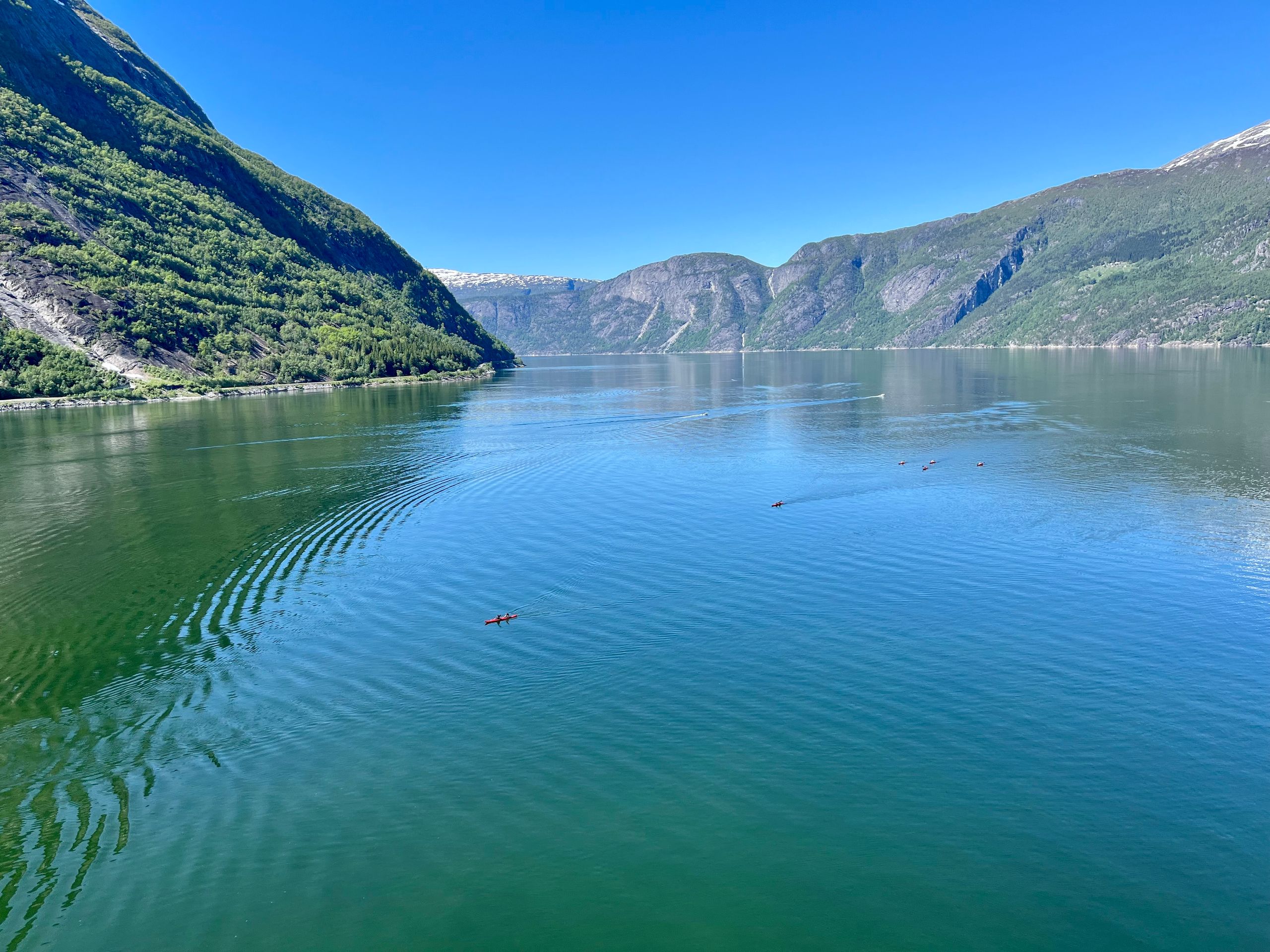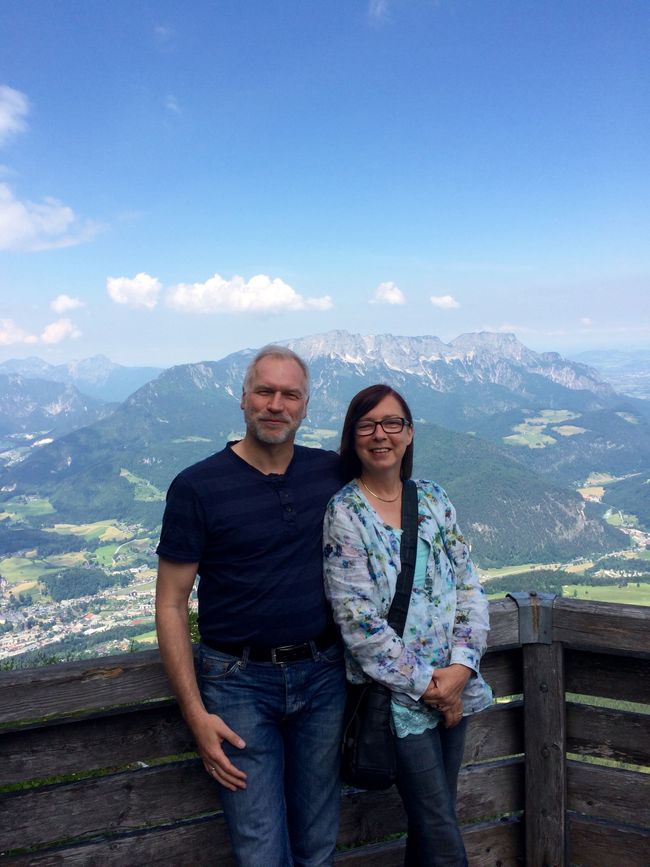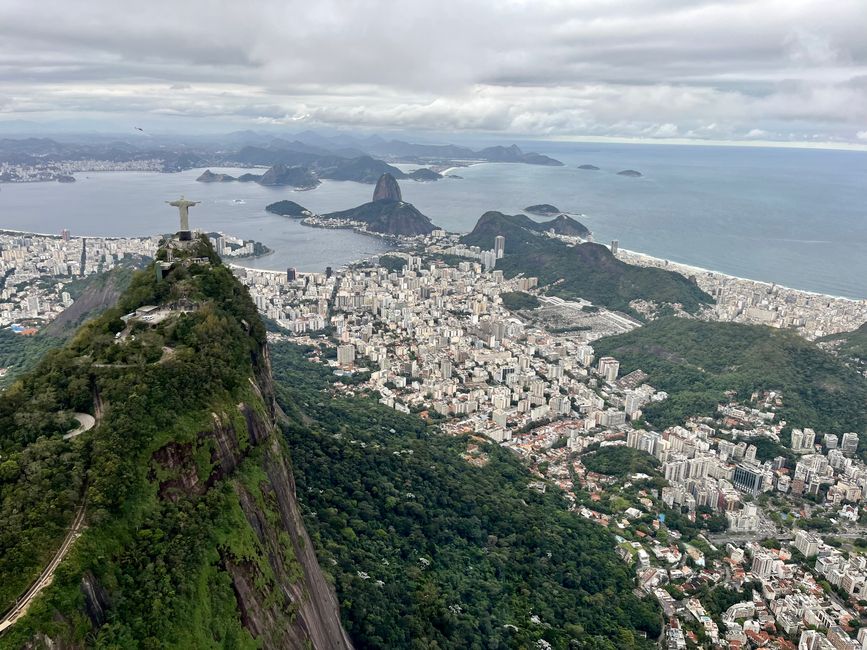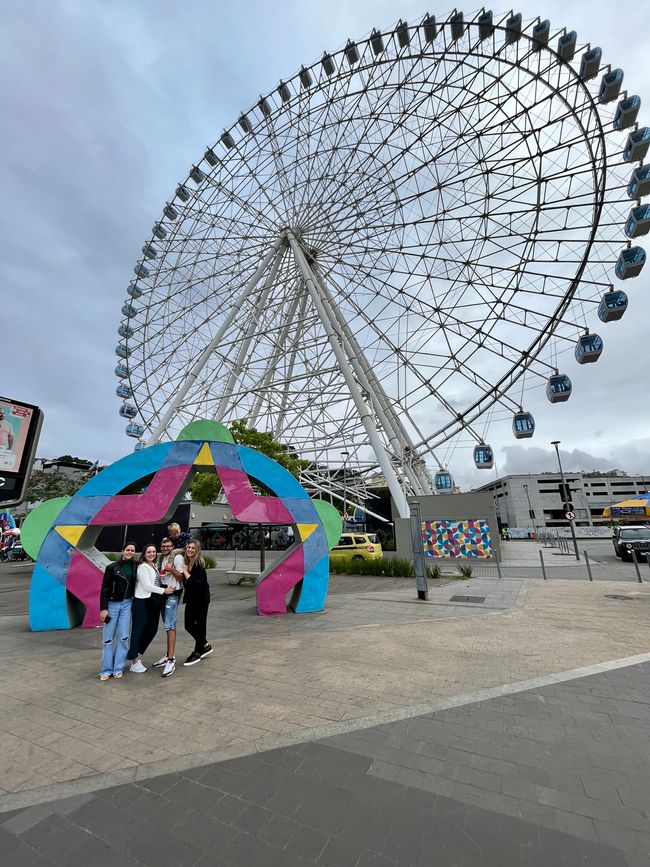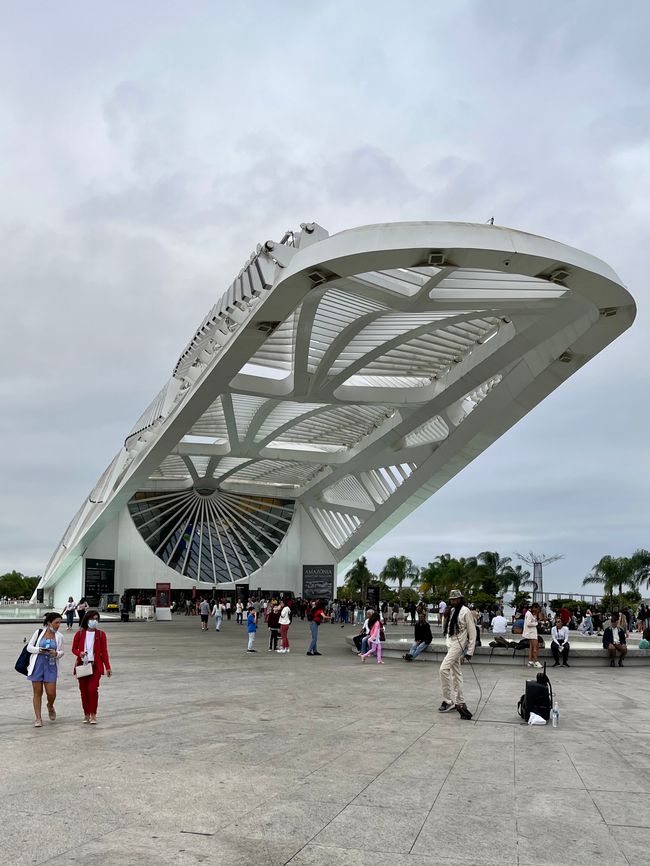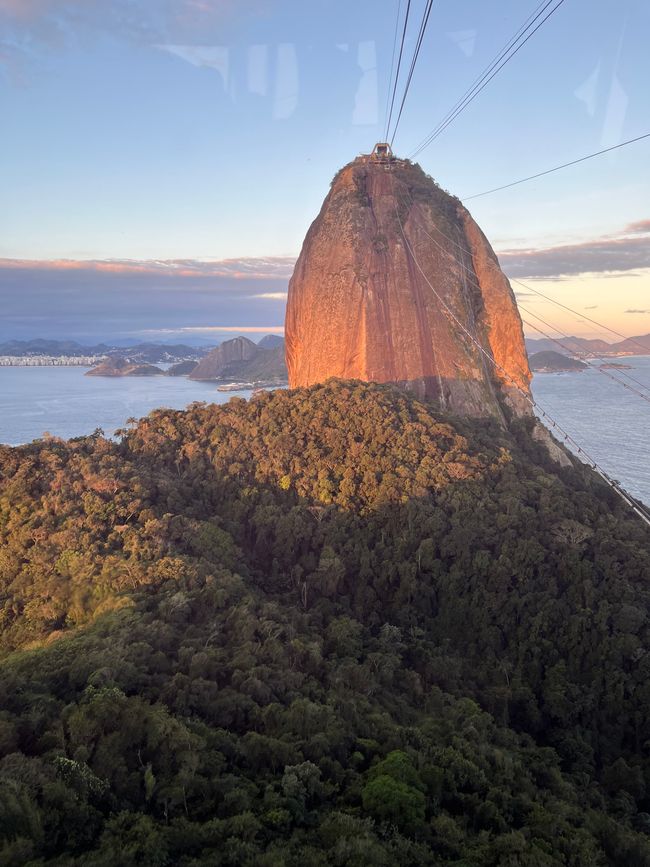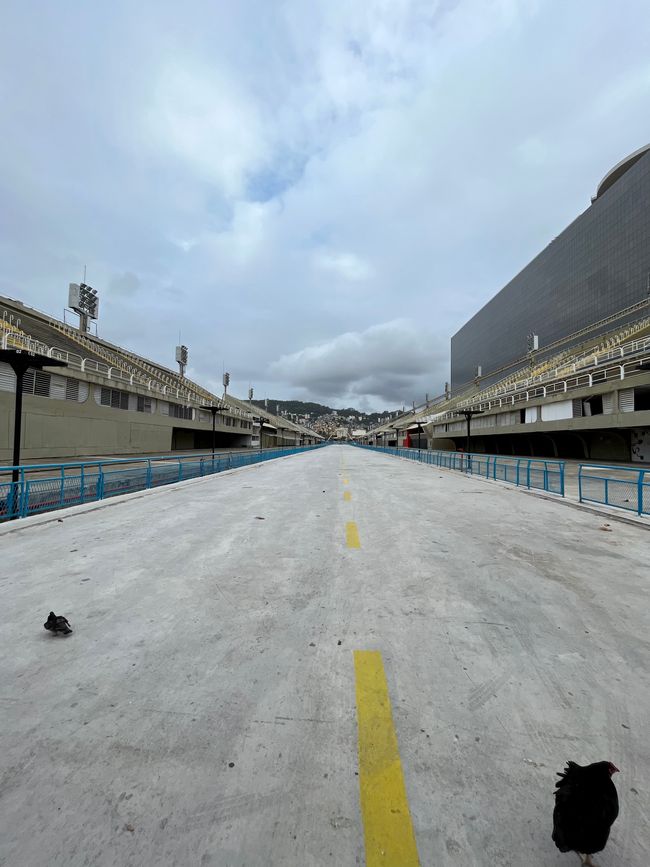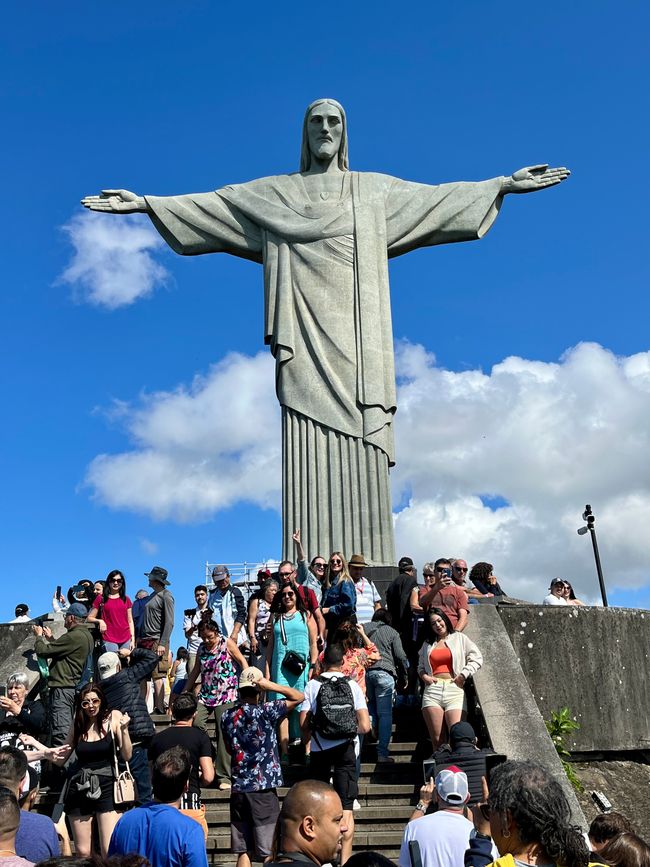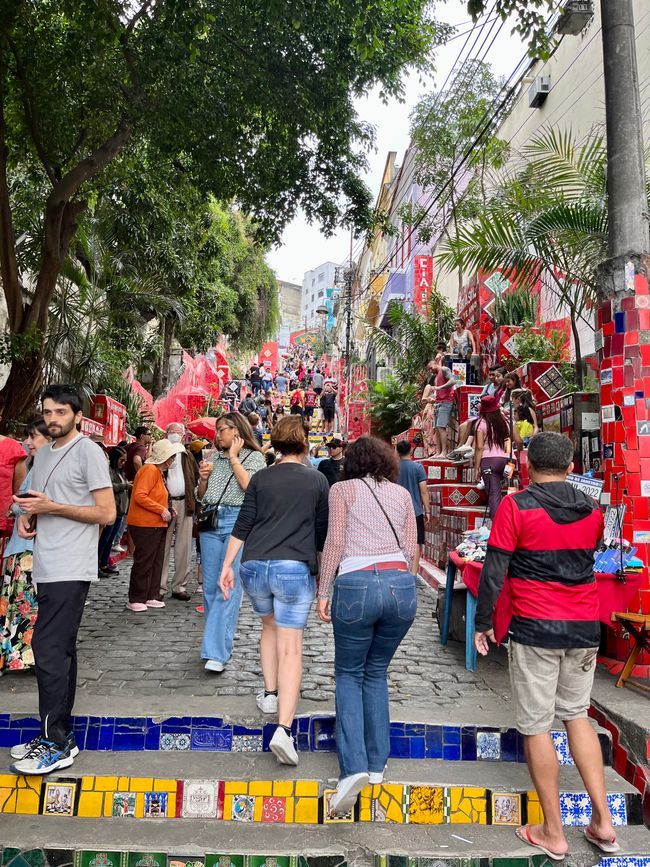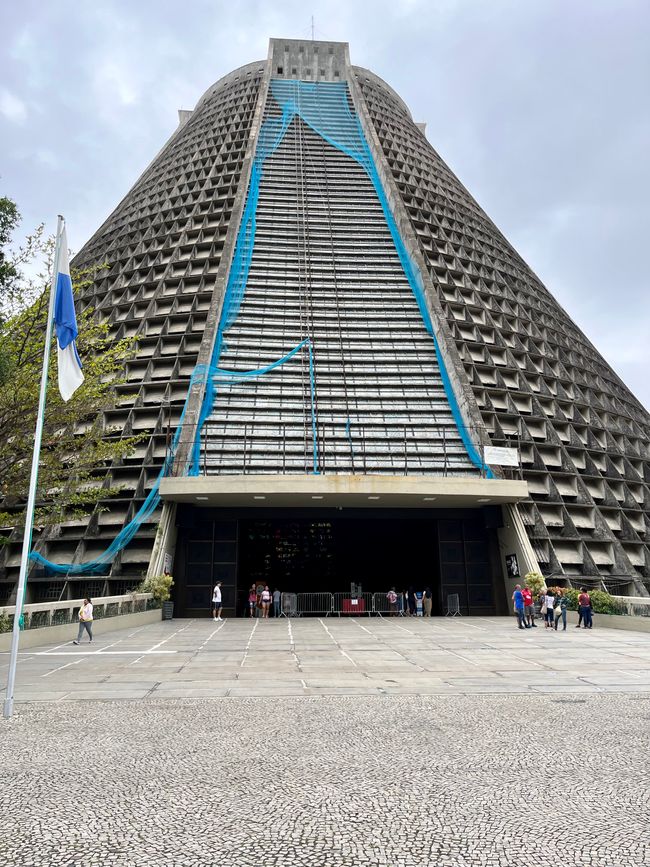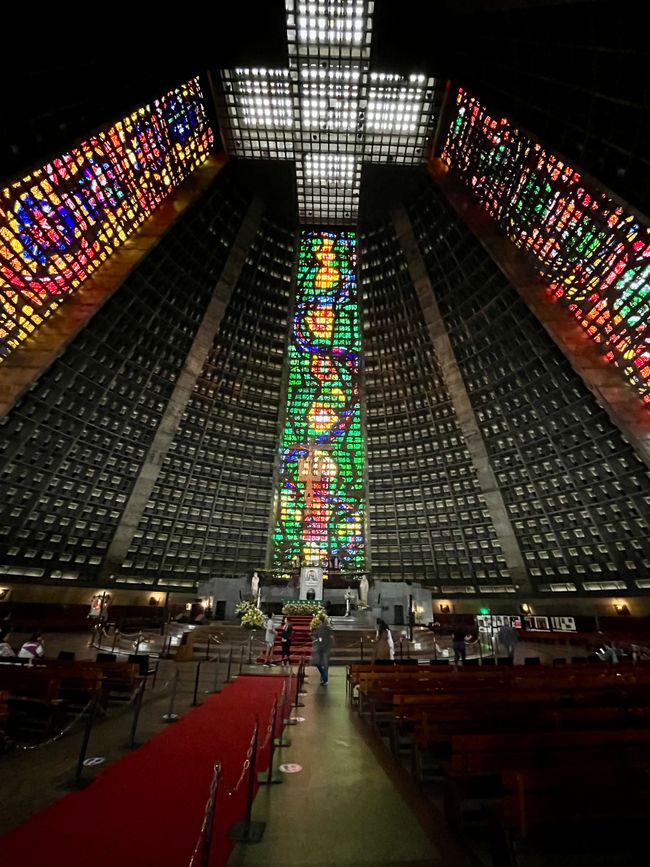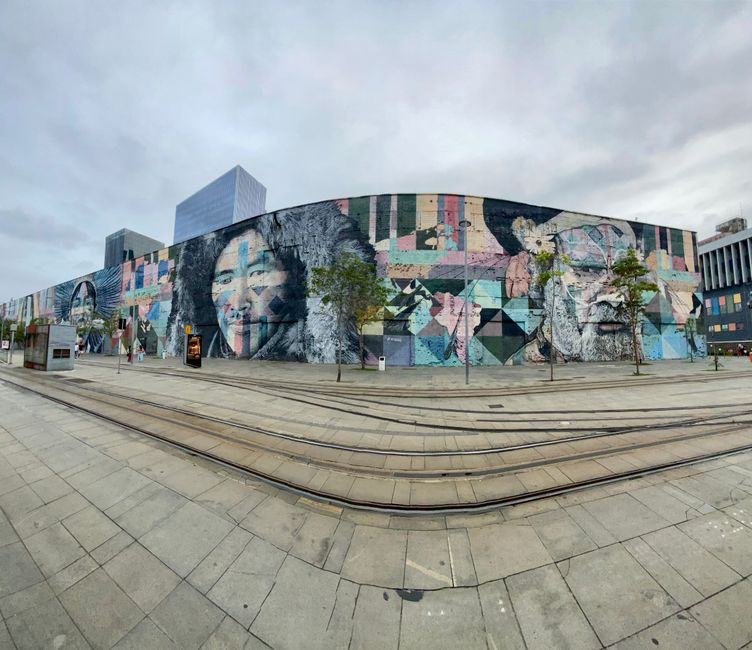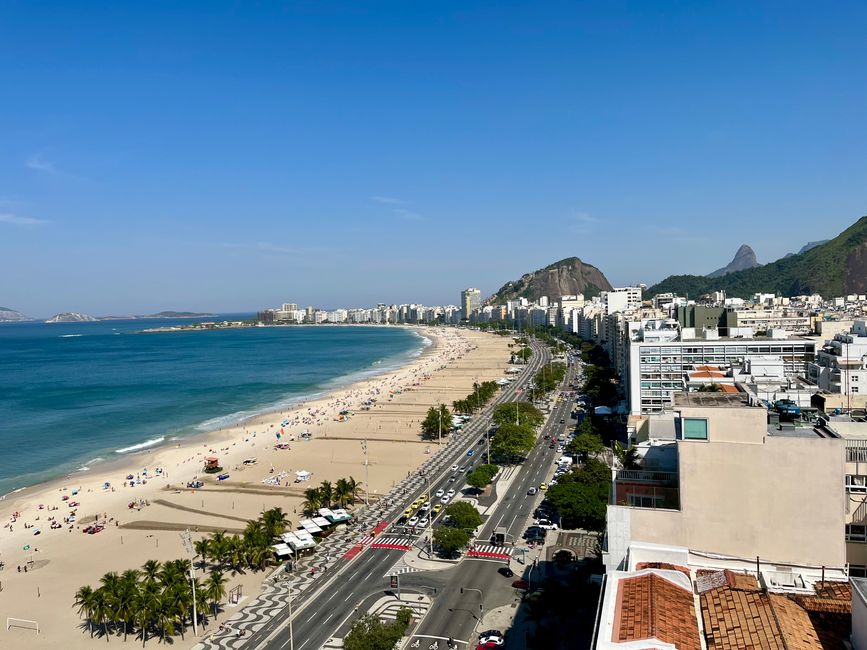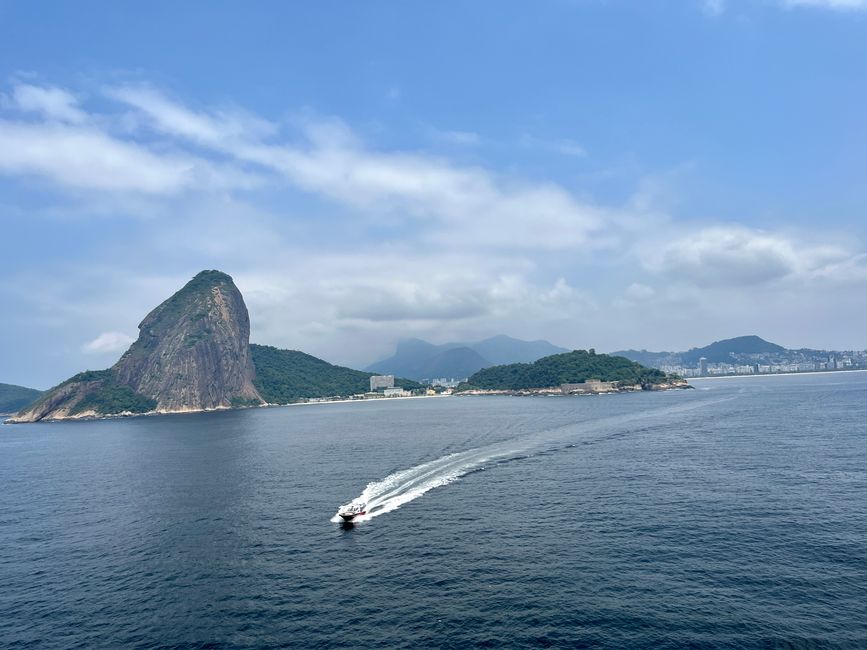Day 17-19: Rio de Janeiro - The Beautiful
Published: 16.11.2022
Subscribe to Newsletter
The Brazilians call it “cidade maravilhosa”, the Beautiful, and Rio is just that. As we sail into the harbor, a fantastic view opens up. Behind the offshore islands, the neighborhoods stretch from the beaches up the wooded hillsides. The modern buildings below abruptly transition into favelas on the steep walls, with their colorful houses clinging spectacularly to the slope. Just the thought of spending a minute there gives me goosebumps. Here, the rich and the poor are directly juxtaposed, often separated only by a street.
Safety is a concern. Our Brazilian friends never tire of warning us. Don't wear jewelry, don't carry a passport, wallet, camera, or a big bag, and keep everything close to your body. Try not to go out alone, preferably with someone who speaks the local language, and pay close attention to areas that are off-limits to tourists.
We always felt safe, maybe with one exception. In the center of Rio lies the famous Selarón staircase, one block behind a busy street. We turned the corner and found ourselves in a different world. Narrow alley with rough uneven cobblestones, high sidewalks dotted with souvenir and food stands, and strange figures in between. Tourists and locals flock to the staircase and climb up. The artist of the same name decorated it with tiles from all over the world. Crowded with people, no chance to keep a safe distance! We only walk a few steps up, watch the hustle and bustle, and leave after a few minutes. I feel relieved.
Also located near the city center is the Sambadrome. Everyone knows the images when the samba schools parade here for the Carnival grand finale. Colorful costumes, rhythmic music, thunderous applause, joy of life. Today, the approximately 800-meter long street with its massive grandstands on both sides is empty in front of us. A light gust of wind blows a bag past us, and about 5 meters in front of us, two lonely chickens peck. It involuntarily brings to mind the legendary scene from the classic film 'High Noon'.
Not far from our docking location are several attractions within walking distance. The Ferris wheel, the aquarium with its large central basin, where stingrays and sharks also swim and which can be crossed in a glass tunnel. Next to it is probably the largest graffiti in the world, covering the entire facade of a warehouse for over a hundred meters in length and about fifteen meters in height. Giant faces staring at you, impressive.
At the end of the pier is the Museum of the Future. It welcomes visitors with a spectacular building and an interesting exhibition. We booked the tickets online and therefore bypass the 100-meter long queue. But once we reach the foyer, we have to line up in a second queue. We slowly move forward for 45 minutes. Pregnant women, families with small children, and wheelchair users are let in on the side. Brazilians everywhere make an effort to prioritize these groups. A 10-minute film in a kind of planetarium shows the creation of the world and humanity. Then the recent past and the current problems of overpopulation, environmental pollution, and exploitation of nature are addressed. After that, visions of the future and possibilities for sustainable use of the Earth are presented. My previously depressed mood brightens up again. There is hope.
We take an Uber to one of the two 'must-haves' in Rio, the Sugarloaf Mountain. With the two-stage cable car, we ascend this world-famous rock formation. We chose the afternoon to experience the sunset and the accompanying light effects. The view over Rio is spectacular. On one side, the famous beaches of Copacabana and Ipanema, next to them the Corcovado with the Christ the Redeemer statue, the marina, and further away, the national airport with its short runway on an island. When the planes touch down right on the edge of the runway, I am reminded of a duck landing in water. In the light of the low sun, the marina is bathed in silver and golden shimmer. I sink into this sight for minutes.
The second 'must-have' is a visit to the Christ the Redeemer statue. We decide to take the bus and were strongly advised to use the official organizer. And indeed, several people approach us directly in front of the ticket counter, offering an even better and cheaper tour. We stick with the official one, and it turns out to be a good decision. With modern Mercedes minibusses, it takes 45 minutes through the city and then up the Corcovado. The stone desert gradually gives way to a dense forest, the road becomes narrower, the serpentines tighter. Occasionally, we catch a glimpse of the city far below us. Once we reach the top, we are greeted by a fairly new-looking building with a restaurant and souvenir shop. A winding path leads to a second bus stop on the side. From here, only licensed buses are allowed to travel the remaining 10 minutes of the route. Upon arrival, we have to climb stairs, some of which can be bypassed by an elevator. Everyone has to pass the final two escalators. Then we are there. Directly under the 38-meter-high statue, it towers up into the sky. We are here early in the morning, right after the opening at 9 o'clock. Nevertheless, we are surrounded by many people. Everyone is pushing towards the platform in front of Christ to take the inevitable photo and enjoy the panorama. We quickly retreat to the area behind the statue. It's much quieter here, and the view over the city is just as good. From the Maracana Stadium, across the center of Rio, the harbor, to the Sugarloaf with the offshore islands, and last but not least, the Copacabana and Ipanema beaches, the view extends. This panorama must be enjoyed.
As a highlight, we also took a helicopter flight over Rio. Arranged by an acquaintance, we were picked up in a limousine and driven to the regional airport of Barra de Tijuca, about 50 km from Rio. After a brief briefing, we headed to the helicopter that was just about to land. Get in, buckle up, put on the headphones, and off we go. We fly directly to the beach and then along the coast of the world-famous beaches of Leblon, Ipanema, Copacabana, and Leme, straight towards the Sugarloaf Mountain. Here we have to bank over the sea because the restricted area of the domestic airport begins. We now fly over the Copacabana towards the Christ the Redeemer statue and circumnavigate it. All of Rio lies below us. A repetition of the panorama from Corcovado, but with this as the central element. From above, I realize once again how the city blends into the landscape and how closely the rich and the poor live together. The return flight takes us over a large favela, and the pilot reports that 800,000 people live here alone. Exactly after 25 minutes, we start our descent.
Rio de Janeiro is, for me, one of the most beautiful and fascinating cities in the world. It combines the entire spectrum of Brazilian culture and society, coupled with the joy of life of its inhabitants.
On the second day, we met up with Leo, a Brazilian friend. There were some difficulties in finding each other because Leo didn't know exactly where the entrance to the AIDA was and where he could park. On the other hand, we didn't have internet outside the ship and couldn't send him our location. Only a taxi driver who gave us a hotspot finally helped us find each other. We talked and had fun over a shared lunch for two and a half hours. Then it was time to go back to the ship.
Half an hour before the scheduled departure, the captain explained that we would stay in Rio for another day. Our next destinations, Montevideo and Buenos Aires, are located in the estuary of the Rio de la Plata, and there is currently bad weather there. In a storm, the ship risks losing the narrow channel in the shallow estuary. That's why we will try to bypass the storm with a one-day delay. Unfortunately, the next planned stop, Puerto Madryn, will be canceled. But safety comes first!
Subscribe to Newsletter
Answer (2)
Brunna
Was für ein wunderbarer Text über Rio!
Ich freue mich, dass es euch Spaß macht! LG, Brunna. <3
Kim
Die schönste Stadt der Welt mit tollen Menschen ♥️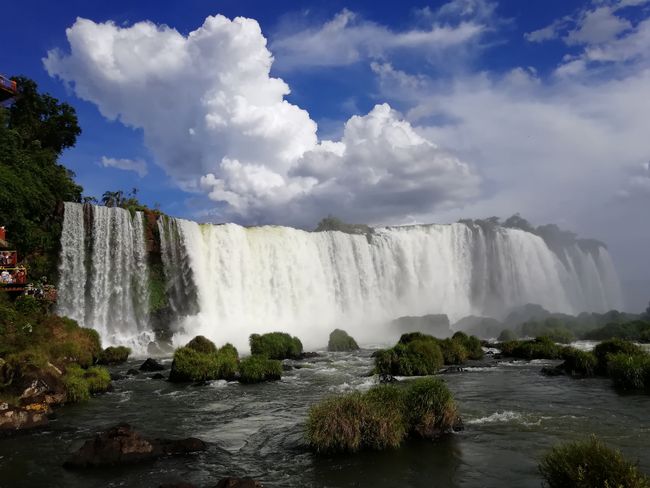
Travel reports Brazil
